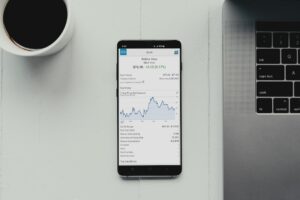The world of forex trading has evolved dramatically over the years, with the introduction of new technologies revolutionizing the way traders operate. These advancements have made the forex market more accessible and efficient, but they also come with their own set of pros and cons.
Let’s explore the advantages and disadvantages of using new forex trading technology.
Pros:
1. Automation: One of the greatest benefits of new forex trading technology is the ability to automate trading strategies. With the help of algorithms and trading robots, traders can set specific parameters and let the software execute trades on their behalf. This eliminates the need for constant monitoring and manual execution, allowing traders to save time and take advantage of market opportunities 24/7.
2. Speed and Efficiency: New technology has significantly improved the speed and efficiency of forex trading. With the use of high-speed internet connections and advanced trading platforms, traders can execute trades in milliseconds, ensuring they don’t miss out on profitable opportunities. Additionally, these platforms provide real-time market data and analysis, allowing traders to make informed decisions quickly.
3. Accessibility: Forex trading technology has made the market more accessible to a wider range of individuals. In the past, trading was mainly limited to large financial institutions and wealthy individuals. However, with the introduction of online trading platforms, anyone with an internet connection can participate in the forex market. This has opened up opportunities for retail traders and has democratized the industry.
4. Risk Management: New forex trading technology offers advanced risk management tools that can help traders minimize their losses. These tools include stop-loss orders, which automatically close a trade when a certain loss level is reached, and take-profit orders, which secure profits by closing trades at a predetermined level. Additionally, some platforms offer risk assessment and portfolio analysis features, allowing traders to assess the potential risks and rewards of their trades.
Cons:
1. Reliance on Technology: While technology has undoubtedly improved forex trading, it also creates a dependency on the software and platforms. Traders need to rely on stable internet connections, reliable trading platforms, and functioning algorithms. Any technical issues or disruptions can lead to missed opportunities or financial losses. Traders must also be cautious of system failures or hacking attempts that can compromise their accounts and personal information.
2. Lack of Emotional Judgment: Algorithmic trading removes the emotional aspect from decision-making. While this can be advantageous in terms of executing trades based on predefined strategies, it can also lead to missed opportunities. Human traders have the ability to consider market sentiment, news events, and other factors that algorithms may overlook. Emotional judgment can sometimes be a valuable tool in making profitable trading decisions.
3. Complexity: New forex trading technology often comes with a steep learning curve. Platforms can be complex, and traders need to invest time and effort to understand their functionalities. Additionally, the use of algorithms and trading robots requires programming skills or the assistance of developers. This complexity can be overwhelming, especially for novice traders who are just starting their forex journey.
4. Over-Reliance on Backtesting: Backtesting is the process of testing a trading strategy using historical data to assess its profitability. While it can be a useful tool in evaluating the effectiveness of a strategy, it does not guarantee future success. Traders should be cautious of relying solely on backtesting results, as market conditions and dynamics can change over time. It is important to continuously evaluate and adapt trading strategies based on current market conditions.
In conclusion, new forex trading technology has revolutionized the industry by making it more accessible, efficient, and automated. Traders can take advantage of the speed, accessibility, and risk management tools offered by these advancements. However, it is essential to be aware of the potential drawbacks, such as reliance on technology, lack of emotional judgment, complexity, and over-reliance on backtesting. Traders should carefully consider these pros and cons and find a balance that suits their individual trading style and goals.





